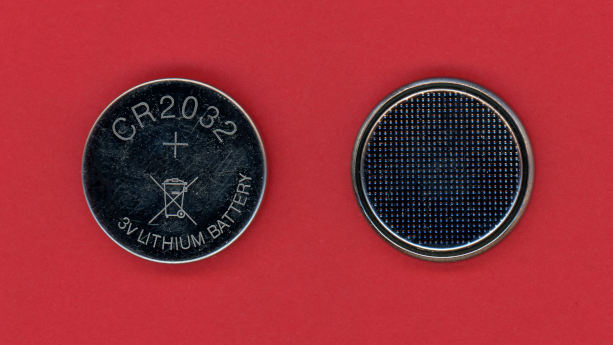
If you are selling button cell or coin batteries, or products containing such batteries in the United States, then you must observe the testing, packaging, labeling, and other requirements set by regulations such as 16 CFR Part 1263.
The regulations presented in this guide may relate to the button cell or coin batteries sold alone, consumer products sold with or designed to use such batteries, or both.
This guide covers laws, federal-level regulations, state-level regulations, and standards.
Content Overview

FREE CONSULTATION CALL (US, EU & UK)
- Request a free 30-minute call with Ivan Malloci to learn how we can help you with:
- Find product requirements
- Certification and labeling
- Lab testing
Reese’s Law
Reese’s Law is an act that was enacted to prevent children from accidentally ingesting button cell and coin batteries. To this aim, the act requires:
a. The Consumer Product Safety Commission (CPSC) to take measures to introduce a new consumer product safety standard for button cell and coin batteries and consumer products containing such batteries
b. Child-resistant packaging for button cell and coin batteries
Performance requirements
Reese’s Law requires the CPSC to introduce a consumer standard containing a performance requirement for the battery compartment of consumer products to be secure enough such that younger users would not be able to easily access the button cell or coin batteries.
The CPSC has introduced the consumer standard containing the performance requirement in 16 CFR Part 1263.
Warning labeling requirements
Reese’s Law also requires the CPSC to introduce warning label requirements for:
a. Packaging of button cell or coin batteries
b. Packaging of a consumer product containing button cell or coin batteries
c. Direct inclusion on a consumer product containing such batteries (as practicable)
Where it is not practical to affix the warning label on the consumer product, the information should be placed in the packaging and instructions.
Further, the warning labels should identify the hazards of indigestion and provide instructions for consumers to seek medical attention if a battery is ingested.
Packaging requirements
Reese’s Law requires button cell or coin batteries sold or included separately with a consumer product sold to be packaged following the special packaging rules contained in 16 CFR Part 1700.15, which enforces the Poison Prevention Packaging Act.
However, button cell or coin batteries that are compliant with the marking and packaging requirements contained in ANSI C18.3M – Safety Standard for Portable Lithium Primary Cells and Batteries are exempted from the special packaging rules.
In the next section, we cover 16 CFR Part 1263 which contains the performance requirements and the warning labeling requirements introduced by the CPSC.
16 CFR Part 1263 – Safety Standard for Button Cell or Coin Batteries and Consumer Products Containing Such Batteries
Reese’s Law required the CPSC to introduce and enforce its requirements. The CPSC did so by publishing 16 CFR Part 1263 which contains a consumer product standard containing a performance standard for consumer products with battery compartments and warning labeling requirements.
The standard does not cover:
a. Products that exclusively use zinc-air batteries
b. Toy products that comply with the battery requirements contained in ASTM F963, Safety Standard for Toys
UL 4200A – Products Incorporating Button or Coin Cell Batteries of Lithium Technologies
16 CFR Part 1263 incorporates by reference UL4200A, a performance standard for consumer products containing button or coin cell batteries. Here is an overview requirements covered by UL 4200A:
- Construction testing requirements
- Performance tests addressing pre-conditioning, abuse, and secureness
- Labeling requirements
Packaging labeling requirements
16 CFR Part 1263 also contains packaging labeling requirements for:
a. Button cells or coin batteries
b. Button cells or coin batteries that are included separately with consumer products
The requirements are satisfied by including the prescribed warning label. For button cells or coin batteries sold on their own, the packaging must also contain safety-related statements found in the final rule.
General Certificate of Conformity
Certain products under the CPSC jurisdiction require the creation of a General Certificate of Conformity. This includes 16 CFR Part 1263. Thus, button cells or coin batteries, and consumer products containing such batteries would require the certificate to be produced.
The certificate should contain the following information:
a. Product identification
b. Citation of each CPSC product safety rule (e.g. 16 CFR Part 1263)
c. Certifier identification of the importer or domestic manufacturer (e.g. name, full mailing address, and telephone number)
d. Contact information of the individual maintaining test results
e. Manufacture date and place
f. Identification of the CPSC-accepted testing company that conducted the tests
You can find a template in the article linked to above, or on the CPSC website.
Mercury-Containing and Rechargeable Battery Management Act
The Mercury-Containing and Rechargeable Battery Management Act contains provisions introducing labeling requirements for specific rechargeable batteries (e.g. nickel-cadmium batteries and small sealed lead-acid batteries), design requirements for products containing such rechargeable batteries, and recycling programs.
Additionally, it contains restrictions for the following types of mercury-containing batteries:
- Button cell mercuric-oxide
- Alkaline-manganese
- Zinc-carbon
- Other mercuric-oxide batteries
Consumer Product Safety Improvement Act (CPSIA)
The CPSIA covers children’s products and sets requirements such as the following:
- Substance restrictions
- Safety standards
- Tracking label
- Children’s Product Certificate (CPC)
- Testing
There are standards that specifically cover battery compartments and address risks related to the use of button cells or coin batteries in children’s products. In the next sections, we present some of them.
ASTM F963 – Standard Consumer Safety Specification for Toy Safety
ASTM F963 is a standard for toy products incorporated by reference under the CPSIA. It covers a wide range of safety requirements for toys, including toy products that are battery-operated.
Specifically, there are requirements to prevent children from accessing the battery and requirements to ensure that the batteries do not overheat. The standard also sets labeling and instructions requirements for battery-operated toys.
ASTM F2923 – Standard Specification for Consumer Product Safety for Children’s Jewelry
ASTM F2923 is a standard that covers jewelry products for children. The standard is also relevant to products containing button cell or coin batteries in children’s jewelry products. It contains requirements that address various hazards, including:
a. Hazards associated with batteries
b. Mouthing or swallowing metals (e.g. cadmium) or other small components of the jewelry
c. Possible exposure to certain chemicals from paints and surface coatings
d. The presence of Hazardous liquids
Although the application of this standard is on a voluntary basis, compliance with voluntary product standards is generally necessary in case no mandatory standards exist for a product.
However, despite this, ensuring compliance with ASTM F2923 is recommended as you can face a product recall due to safety issues. It is ultimately in your self-interest as a brand or importer to ensure that your products are as safe as possible.
Lab Testing
Engaging a lab testing company is necessary to comply with mandatory requirements or, in the case of the application of voluntary standards, a practical necessity.
When you complete the tests, the lab provides you with a test report that shows compliance with relevant standards and requirements.
Testing requirements may vary greatly among standards, as different standards are created to address various topics. For example, a standard like ASTM F2923 focuses on the accessibility of the batteries and requires tests that prove that the product battery compartment is not easily accessible. Other standards may focus on safety tests, packaging performance tests, and so on.
| Regulation | Lab testing |
| 16 CFR Part 1263 – Safety Standard for Button Cell or Coin Batteries and Consumer Products Containing Such Batteries | 16 CFR Part 1263 incorporates ANSI/UL 4200A-2023 which contains the following tests:
a. Construction testing b. Performance tests addressing pre-conditioning, abuse, and secureness |
| Mercury-Containing and Rechargeable Battery Management Act | The standard sets substance restrictions for different substances, including mercury |
| ASTM F963 | This standard contains many test methods including the following:
|
| ASTM F2923 | This standard contains requirements that include:
|
Button cell and coin battery testing companies
The following lab testing companies can provide testing for button cells and coin batteries against the requirements contained in 16 CFR Part 1263 and other requirements:
- UL Solutions
- Intertek
- QIMA
Additional Requirements
Button cell and coin batteries, and products that come with such batteries sold in US markets are also affected by general regulations for consumer products, such as the one listed in the table.
| Regulation | Description |
| California Proposition 65 | California Proposition 65 contains substance restrictions for substances like heavy metals, phthalates, and other substances in consumer products sold in the state of California.
It also contains warning label requirements. Batteries and battery-containing products have to abide by this regulation. |
| Country of origin | The country of origin marking requirement is relevant to imported articles and possibly their packaging, including batteries and battery-containing products. |
| Uniform Packaging and Labeling Regulation (UPLR) | Various US states adopt the provisions contained in the Uniform Packaging and Labeling Regulation which sets labeling requirements for the packaging of consumer and non-consumer products, including batteries and battery-containing products. |
| Fair Packaging and Labeling Act (FPLA) | The Fair Packaging and Labeling Act contains labeling requirements for the packaging of certain products like food, drugs, cosmetics, and devices regulated by the FDA. As some medical devices can make use of button cells or coin batteries, the requirements of this act would be relevant. |
| Amazon requirements | Amazon sellers must comply with the standards and requirements that Amazon prescribes as a condition for using their platform. For instance, Amazon has specific requirements for lithium batteries and coin batteries. |
Recommended articles
- California Proposition 65 Guide for US Importers & Amazon Sellers
- Country of Origin Requirements in the United States: An Overview
- Uniform Packaging and Labeling Regulation (UPLR): A Complete Guide
- Fair Packaging and Labeling Act (FPLA) for Importers & Manufacturers
- Amazon Lithium Batteries Requirements For Sellers: An Overview
















 Create compliance checklists for your product (US, EU & UK)
Create compliance checklists for your product (US, EU & UK) 20+ product certificate templates
20+ product certificate templates Create label files
Create label files Book product testing
Book product testing